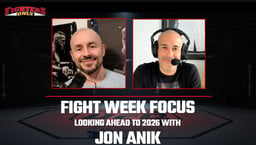
Issue 105
September 2013
Which of these two rival training programs will make you a better fighter?
Paul McVeigh Sports scientist, TUF 14 cast member and full-time coach – each issue he presents his best conditioning tips
Here at FO we’ve decided it’s time to have a winner-take-all showdown between the two training philosophies that have had members of the strength and conditioning world squaring up to each other for years.
We’re taking a close look at the pros and cons for bilateral and unilateral lower-body movements, and asking which of the two will make you a better fighter.
For the uninitiated (and we hope there aren’t many of you out there), bilateral movements are those in which the two sides of the body mirror each other – like in a squat, hurdle jump or a dead lift. Any stance that strays from this mirrored idea is more unilateral in nature. This includes step-ups, split squats and single-leg dead lifts
Both of our contenders have rowdy supporters, with one side claiming that heavy back squats will cure all known ills and single-leg work is for sissies, while the other believes dead-lifting will leave you in traction for six months and the ability to pistol squat is the true measure of a person’s value. So, having made the introductions, it’s time to ring the bell, and let’s get it on!
WHY LIFT WITH ONE LEG?
Many people, particularly guys who have spent a lot of time building up their squat, seem to dislike single-leg work. There is less stability in a unilateral stance and not being able “to get the balance right” is the last thing you tend to hear from someone attempting the technique before the movement is abandoned in favor of a bilateral alternative.
As with many things, the fact that it is challenging is exactly why it’s important. Unilateral movements really hammer the hip-stabilizing musculature. The stronger these muscles become the better your performance will be.
More weight will be moved and the likelihood of injury reduced. Weak hip stabilizers have been identified as playing a major role in the development of knee pain, lower-back pain and even ankle and foot pain.
Also, using predominantly one leg vs. two in a movement limits the loading your spine has to deal with. A heavy back squat that goes funky can cause a lot of problems (see YouTube for an array of upsetting examples). This is less likely with unilateral movements because you cannot usually reverse lunge anywhere near what you can squat, and that means less shear forces and a much happier spine.
Another reason to keep unilateral movements in your program is the effect on mobility. Foam rolling and stretching protocols are all good things but to really cement in your new range of motion permanently we really want to be strengthening this new found range.
Tight hip flexors are pandemic in a world were people sit all day and rarely change position. Unilateral movements, like the Bulgarian split squat, are great tools for opening up those stiff hips; and with tight hip flexors being a thing of the past you can recruit your posterior chain muscles much more effectively and tap into your true athletic potential.
WHY LIFT ON TWO LEGS?
While you get all that good stuff from having strong hip stabilizers there is a cost. When your hip stabilizers are being challenged your body’s main concern is stopping you from falling over, as opposed to moving massive weights. The more stability intensive a lift is, the less work the big prime movers get to do. So while you can develop some serious definition with the unilateral lifts, if strength and power gains are your main concern you really should be dead lifting and squatting.
THE CONCLUSION
By now you have probably guessed that including both bilateral and unilateral movements is the best course of action. A complete training program for a mixed martial artist should include some bilateral movements for strength and power and some unilateral movements for injury prevention, hip mobility and stability.
In strength and conditioning the best approach always tends to be lurking somewhere in the middle of the debate.
...









